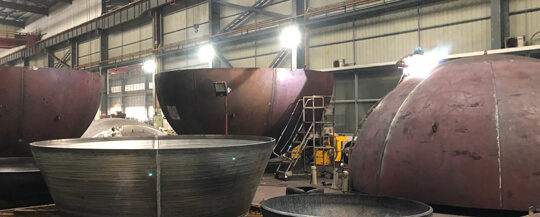The welded joints of pressure vessels can be divided into three parts according to the area: weld, fusion zone and base material heat-affected zone. There are differences in the composition and mechanical properties of each zone. Generally speaking, the composition of the weld is generally in the form of austenite columnar crystals; The fusion zone is the transition area where the welding seam and the base metal are joined in the welded joint. Most of them are in the form of black bars, and there are also many impurities. The structural components exist in the form of austenite columnar crystals and dendrites. This structure form Due to the non-uniformity of the composition of the composition during the welding process, the mechanical properties of the weldment will be defective; The heat-affected zone of the base material belongs to the overheated zone, and its structural composition exists in the form of austenite twin crystals, and its welded joint defects are generally located around the fusion zone. During welding, the fusion zone gradually expands to the base material heat-affected zone. Among them, horizontal and vertical welding defects will appear. This factor is also a variety of causes. The specific analysis is as follows:
Transverse welding defect factors
At the junction of the base metal and the weld, transverse welding defects are often prone to occur. That is, when welding, the fusion zone is heated and cooled in a local area, so that some low-melting alloys and inclusions in the material melt locally, resulting in defects. Therefore, transverse welding defects mainly occur in the periphery of the fusion zone and extend to the overheated zone in the heat-affected zone of the base material.
longitudinal welding defect factors
Longitudinal welding defects are mainly caused by stress concentration. After the welding is completed, the welding residual stress and deformation are prone to occur inside the welding. If it is shaped again, there will be welding residual stress and cold forming stress. Once the allowable stress of the material is exceeded, its welding effect will be affected.
(1) Welding residual stress
During the welding process, local welding is always performed, and the entire welding is not heated and cooled at the same time, making the weld metal and the base metal in the vicinity of the area unevenly heated, so that some areas are expanded and another area is compressed, which directly causes residual stress. Appeared, and finally deformed the weldment.
(2) Cold forming stress
In the manufacturing process of the head, under the force of a certain pressure, the cold press forming process is used to complete the manufacture. In the manufacture of the head, the applied stress will cause stress in the weld area, that is, cold forming stress.
